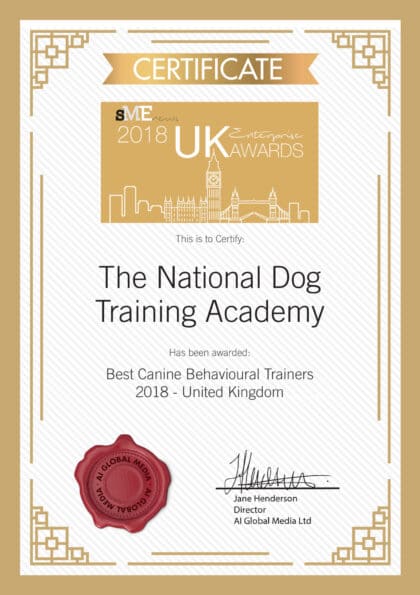
Bringing Puppy Home
Bringing home a puppy is so exciting (and slightly chaotic), but also overwhelming. Those big eyes, and that puppy smell (you know the one!) could melt even the hardest of hearts. But: along with all the cuddles can come a fair share of chewed furniture, little puddles, and the occasional midnight meltdown.
That’s where training comes in.
The word “training” often sounds strict, time-consuming, and about as fun as watching paint dry. But puppy training isn’t military drills — it’s simply spending quality time with your puppy, showing them how to live happily in your world. Done right, training can be fun, rewarding, and the secret to building an unbreakable bond between you and your new best friend.
Training Starts on Day One
The moment your puppy sets a paw in your home, the learning begins. Puppies are little sponges, soaking up information from the world around them — and that includes the good habits you encourage, as well as the bad ones you accidentally allow.
Day 1 should be about exploration. Let your puppy sniff, wander, and get familiar with their new surroundings. Everything is new: the smells, the floors, even the sound of the washing machine! A little curiosity is healthy, but here’s the trick — gently guide them away from behaviours you don’t want (like chewing your slippers) and towards better options (like their new chew toy).
This is just real-life training in action.
Toilet Training: By Day Two, It’s Serious
By the second day, it’s time to roll up your sleeves and focus on toilet training. Because let’s face it, nobody wants to be scrubbing carpets forever.
Here’s the key: consistency. Take your puppy outside regularly — after meals, naps, playtime, and about once every hour or two. When they “go” in the right spot, loads of praise! Praise, treats, the works. Make it crystal clear that outside is the place to be. Monitor pup all the time to avoid accidents.
Now, what about puppy pads? Puppy pads can confuse your pup into thinking it’s okay to go indoors. If you need an indoor toilet area for when you’re out or if you don’t have a garden, the ideal is a box with some rolled up turf in it. This gives the ‘grassy’ texture under their paws, it’s absorbent and it helps with the whole ‘going outside’ process.
Crate Training: Not Doggy Jail, but a Safe Haven
Some people hear “crate training” and picture locking a puppy away like a criminal. But here’s the secret: a crate is not punishment. It’s a bedroom — your pup’s very own safe, cosy space.
When introduced properly, puppies learn to love their crate. It helps with toilet training (because most pups won’t go where they sleep), it keeps them safe (and your home) when you can’t supervise, and it gives them a calm space to relax. It’s somewhere to nap, settle, and feel secure.
Done right, your puppy will choose to head there all by themselves when they’re tired.
Teaching Sit
Positive, reward-based training is the most proven, effective way to teach your puppy. It builds trust, strengthens your bond, and helps your puppy feel confident.
But — and this is where many owners slip up — rewards must be used correctly. Use the treat, up over pups head, to encourage the sit. Don’t add in any words until pup has the hang of it. BUT once you know pup understands the word ‘sit’ don’t be tempted to wave a treat in your pup’s face if they’re not listening or you’ll quickly end up with a furry little dictator who refuses to sit, stay, or even blink unless you’ve got a biscuit in your hand.
Watch the video below for teaching a sit.
- Reward the good behaviours you want to see more of.
- Gradually mix in other rewards — praise, play, cuddles — so your pup doesn’t think food is the only reason to listen.
- Don’t bribe. Ask for the behaviour first, then reward when it’s given.
- If it’s not given, a firm, ‘no’ and walk away – a few seconds later, try again.
Done right, your puppy will learn to enjoy working with you, not just for snacks, but because it’s fun and rewarding.
Training is Just Quality Time
Let’s take the pressure off. Puppy training isn’t about strict schedules or hours of drills. It’s about everyday moments. Teaching your pup where to sleep, guiding them to the right chew toy, practising “sit” while you boil the kettle, or calmly walking a few steps on the lead — it’s all training.
And here’s the best part: training doesn’t just teach your puppy how to behave. It also gives you both structure, routine, and a relationship based on trust and communication. That’s worth its weight in gold.
A Little Effort Now = A Lifetime of Happiness
Yes, it’s tiring in the beginning. There will be accidents, maybe the odd chewed shoe, and days when you wonder what you’ve let yourself in for. But here’s the good news: all that effort pays off. A few months of consistency and patience now will reward you with years of joy, calm, and companionship with a dog who fits beautifully into your family.
Think of it this way: you’re not just training a puppy — you’re raising the grown-up dog they’ll become.
Want More Guidance? Grab Your Free Puppy Training eBook
This article only scratches the surface of what’s possible when you train your puppy the right way. That’s why I’ve put together a free puppy training eBook packed with step-by-step advice, tips, and guidance to make life easier for both you and your pup.
For all those early days at home topics, it’s all in there. And best of all, it’s yours for free.
Final Thoughts
Training your puppy is about being consistent. It’s about being smart. It’s about building habits, guiding behaviours, and creating the bond of a lifetime. Start from day one, stay consistent, and most importantly — enjoy the process.
Because let’s be honest: puppyhood flies by in a blur. The effort you put in now will shape your puppy into the wonderful, well-mannered dog you’ll enjoy for years to come.
So, grab some treats (or their food), a little patience, and your sense of humour — and get started. You’ve got this. 🐾
For more guidance and support on puppy training, check out our puppy training hub.









